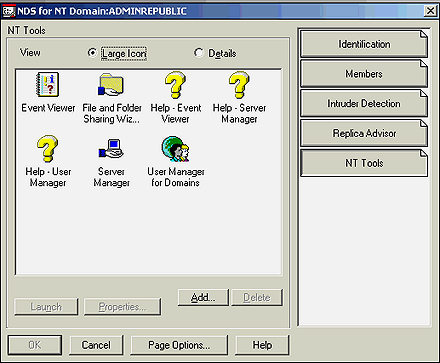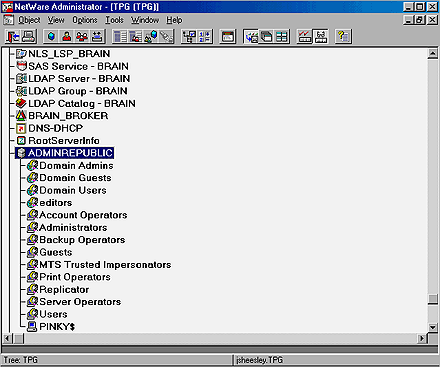

Financial Ltd
|

Directory Enquiries

Currency Converter

Train Tickets



|
| |
Why do I need replicas?
NDS replicas contain the NDS information necessary for users to log on to the
network. If the replica is held on a server that is separated from the users by
a slow or unreliable WAN link, the users will experience slow logons. In some
cases, they may not be able to log on at all, even if they have a server
locally. With a local replica, you don't have to worry if your WAN goes down.
Users authenticate based on information in the replica.
The last tab, NT Tools, is shown in Figure E. This tab acts as a
convenient launch pad for NT administrative utilities. If you're running NetWare
Administrator from an administrative workstation, NetWare Administrator may ask
you to log on to a Windows NT server before displaying any icons. Unfortunately,
this tab isn't accessible if you run NetWare Administrator from a Win9x
administrative workstation. You'll only see it if you run NetWare Administrator
from your NT server or an administrative workstation that runs NT Workstation or
Windows 2000 Professional.

Figure E
The NT Tools tab allows you to launch NT utilities from within
NetWare Administrator.
By default, NT Tools includes shortcuts to User Manager, Server Manager, and
Event Viewer. You can add other utilities by clicking Add and entering the
necessary launch information. Using the NT Tools tab lets you launch the
utilities without having to exit or minimize NetWare Administrator.
Additionally, you can use the File and Folder Sharing Wizard to set up shared
drives and folders on your NT server. We'll cover the File and Folder Sharing
Wizard and other NT administration tasks in an upcoming Daily Drill Down.
Other NDS for NT objects
If you double-click the Domain object, you'll see additional objects within the
domain, as shown in Figure F. If you've administered Windows NT before, you'll
immediately recognize the icons as being Windows NT group and workstation
objects. Domain objects can contain Alias objects, NDS for NT Global Group
objects, NDS for NT Local Group objects, and NDS for NT Workstation objects.

Figure F
The Domain object contains other NDS for NT objects.
Alias objects within a Domain object are just like regular Alias objects. All
they do is reference other objects in the NDS tree. Unlike standard NDS Alias
objects, NDS for NT Alias objects can reside only within a Domain container.
Additionally, NDS for NT Alias objects can alias only other NDS for NT objects.
The NDS for NT Global Group object represents global groups that reside in the
NT server's domain. Global groups contain User objects that have common rights
on the NT server. If you have multiple domains on your network, you can also use
global groups in conjunction with trust relationships to grant rights across
domains.
The NDS for NT Local Group object represents local groups that reside in the NT
server's domain. As the name suggests, local groups represent groups that reside
and control rights only within the NT server's domain. No matter how you've
configured trust relationships, local groups aren't accessible outside the
domain. Unlike global groups, local groups can contain global groups as well as
User objects.
 

|

